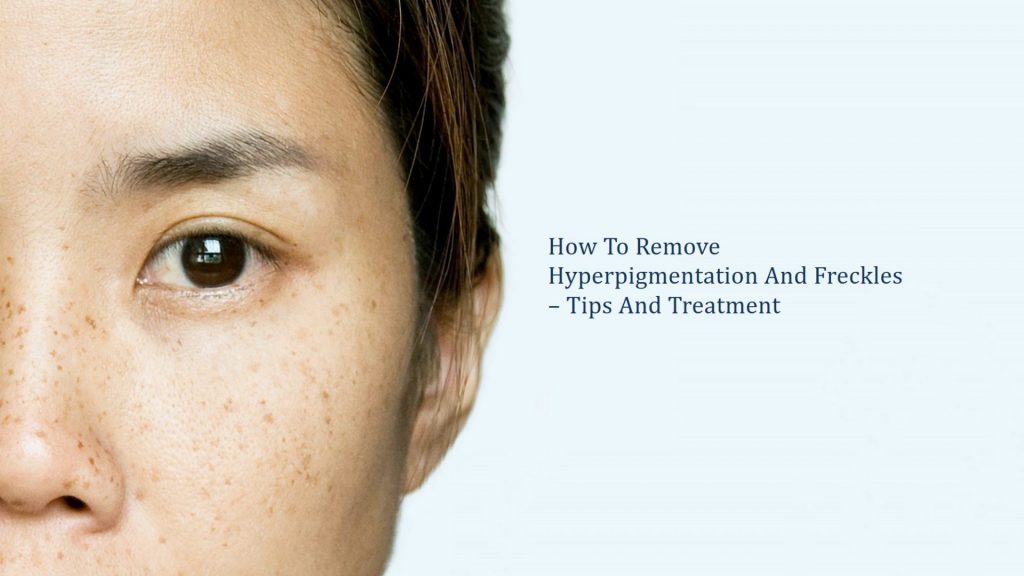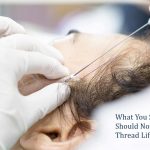Skin is the organ that is not only responsible for giving a solid look to the body but also works for the protection of the intricate mechanisms going on inside it. As a result, it acts as the first line of defense and is the organ that is the most prone to being damaged, which affects the natural look of the skin. In recent years, people are becoming increasingly conscious to maintain their skin in a perfect state. Skin treatments such as skin boosters, dermal fillers and laser treatments to remove freckles are becoming immensely popular not only in Singapore but all over the world. Let us dive right into the topic on hyperpigmentation and what treatments are offered in Singapore for this concern.
What Is Hyperpigmentation And Freckles?
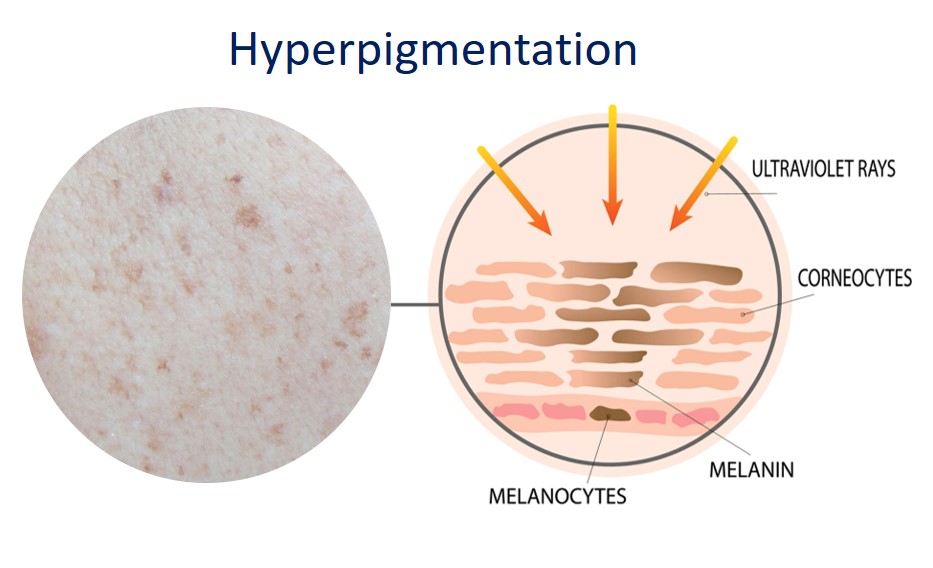
The main agent behind giving the skin its color is melanin. Melanin is produced under the skin by a special kind of cells known as melanocytes. The production and maintenance of a appropriate amount of melanin in the skin are tightly regulated by the genetic program determined by a person’s DNA. However, some disorders disturb the regulatory checks in the production of melanin and results in the accumulation of melanin under specific areas in the skin. These areas become slightly dark-brown in color and are called hyperpigmented areas or freckles.
Freckles are usually benign and are their formation is due to the accumulation of melanin which is triggered by various factors such as exposure to sun and environmental agents. They give a patchy outlook to the skin which affects its overall appearance. [1] Freckles are visible on the skin of people having fair complexions.
What Causes Pigmentation?
Hyperpigmentation is a very common skin problem that affects all skin types. The most common reason behind hyperpigmented areas on the skin is due to excessive exposure to the sun. Sun rays contain ultraviolet light, which triggers the production of melanin. Excessive production of melanin causes its accumulation in the areas which are frequently exposed to sunlight, such as the forehead, sides of the nose, arms, or legs. This results in the formation of dark skin spots in these areas, which are also known as melasma.
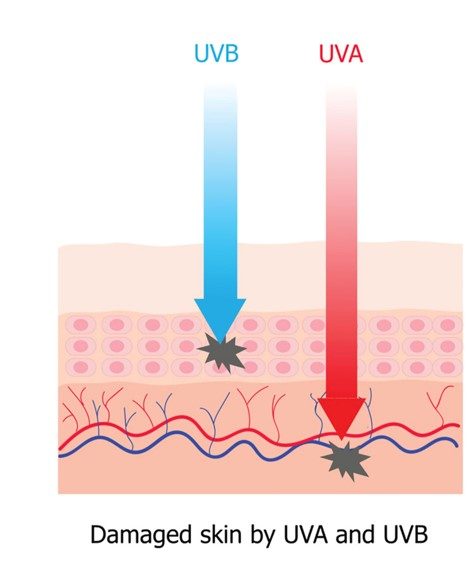
Another common cause of the formation of hyperpigmented areas is some injury or inflammation. This includes conditions such as skin acne, cuts, or burns. Hyperpigmentation due to these causes can occur almost anywhere on the body, most commonly around the areas involved in the injury.
Some conditions of hyperpigmentation are attributed to hormonal imbalance. This is particularly common among women after puberty and is caused due to the production of hormones estrogen and progesterone, which cause the excess formation of melanin in the body. The dark patches formed due to this condition are known as chloasma.
Common Types Of Pigmentation
According to a clinical study, pigmentation in its various types affects almost 80 percent of all women during some stage of their life. Doctor assess the patient’s skin before selecting a laser for pigmentation removal. Various types of pigmentation concerns are:

Freckles
Ephelides, also commonly known as freckles, develop in people having particularly fair complexions. They result due to excessive exposure to sunlight, and their appearance gets darker overtime.
Solar Lentigines
Solar lentigines are more pigmented as compared to freckles. They have a sharp and clearly-defined edge and may occur anywhere on the body with a dark brown to black color variation of the spots. They occur due to the exposure of skin to ultraviolet light (UV). Solar lentigines can develop skin cancers or melanomas if left unchecked, that is why their timely treatment or annual checks are necessary.
Melasma
Such skin spots appear in the deeper layers of the dermis. The characteristic features of melasma are that they appear on the face, and do not have sharp or distinct borders. Contrary to solar lentigines, melasma occur mainly due to hormonal imbalance and particularly affect women of child-bearing ages.
Post-inflammatory Hyperpigmentation
This type of hyperpigmentation affects the skin after an injury or a burn. Injuries cause inflammatory reactions in the skin. This inflammatory reaction stimulates reproduction of various cells and sometimes, in an unproportionate manner. The new cells regenerated also includes melanocytes, which secrete melanin that accumulates under the skin producing a dark patch. [3]
Tips For Removing Pigmentation
There are various strategies to get rid of hyperpigmentation on the skin. Some of them are listed below:
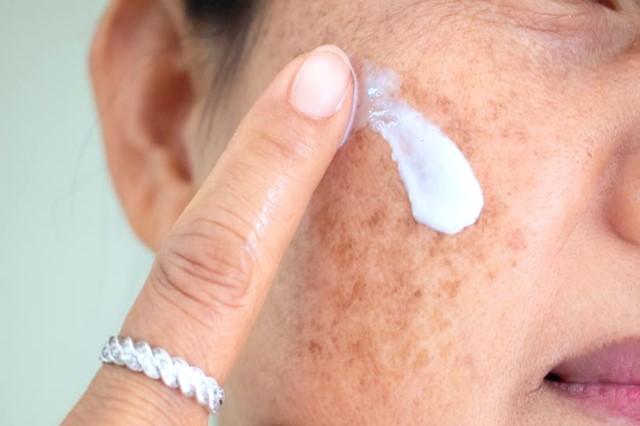
Topical Creams
Topical creams that are used to get rid of hyperpigmentation are pharmaceutical formulas that decrease the production of melanin in the areas they are applied. Some examples of topical solutions include retinol creams or hydroquinone creams. They may be able to lighten the dark, patchy areas on the skin and freckles. Topical creams may have side effect of irritating the areas they are applied to when exposed to bright sunlight. That is why they need to be used in conjunction with sunscreen to avoid ultraviolet rays.
Oral Medications
Oral medications used to treat melasma and other hyperpigmented conditions are usually formulated with tranexamic acid. Tranexamic acid is known to decrease the levels of the enzyme tyrosinase. This causes a decrease in the production of melanin.
However, long-term use of such pills can cause gastrointestinal symptoms. Most of the patients report abdominal bloating and pain. One needs to consult a certified physician before using tranexamic acid pills. [4]
Chemical Peels
Another effective strategy to eradicate hyperpigmented areas from the skin is using medical-grade chemical peels. As clear from its name, this procedure involves ‘peeling’ out the outermost layer of the skin which contains accumulations of melanin. The peeling process stimulates the cells in the deeper layers to regenerate, which not only removes the hyperpigmented areas but also helps to make the skin look fresh and young.
However, this technique may cause some side effects in people like a rash, stinging or redness on the skin.
Intense Pulse Light Treatment

Intense pulse light (IPL) treatment to treat hyperpigmentation involves the use of broad-spectrum light to destroy the melanin particles directly in the hyperpigmented areas. The broad-spectrum light is produced from a handheld device. The common side effects involved in this procedure include redness in the area where the device is used while will usually subside a few hours after the treatment.
Pico Laser
Pico laser is a relatively new procedure available on the market in Singapore to treat melasma and other types of hyperpigmentation. Like pulse light treatment, the Pico laser also breaks the melanin particles. However, it breaks the pigmentation into much smaller fragments to allow the body to clear those cells more easily. When the laser is applied correctly on the pigmentation, it makes it more effective compared to other laser treatments. Side effects include redness, pinpoint bleeding, rash, and crusting in the areas where the laser is used.
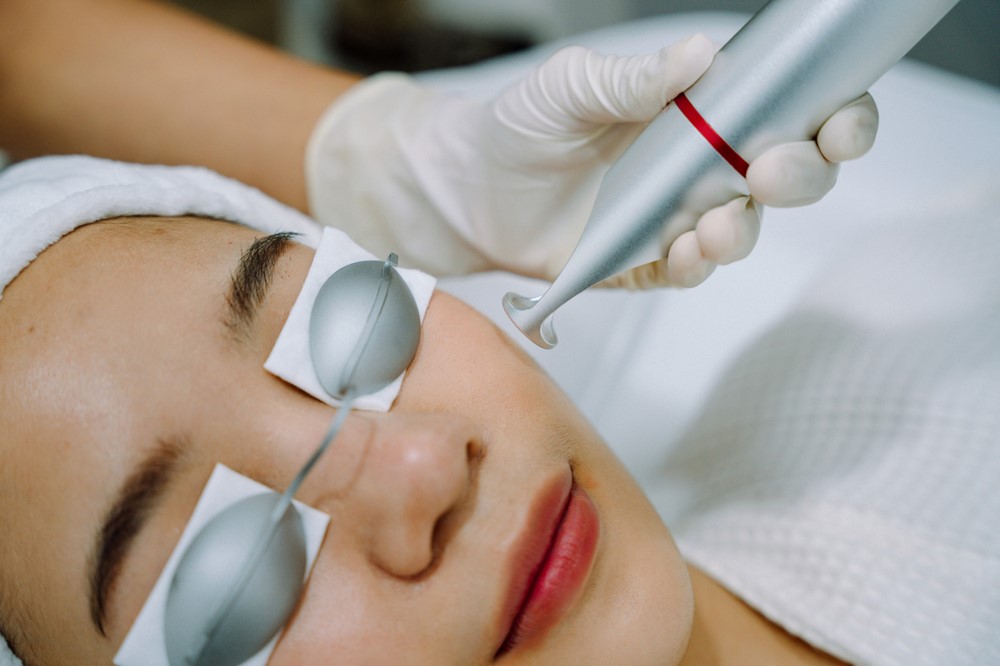
Q-Switch ND YAG Lasers
Q-switch neodymium YAG lasers are medically proven to treat vascular lesions. However, they are also very effective to target melanin and break it into tiny particles. At the same time, the laser stimulates cellular renewal, pushing younger and healthier cells to the surface of the skin. This allows the skin to rejuvenate and lighten unwanted freckles, solar lentigines, and melanocytosis gradually. Side effects are similar to other laser treatments and include mild pain, redness, or in rare cases, blistering.
Will Pigmentation Be Gone For Good?
Like most other disorders, pigmentation in the skin may recur even after successful laser therapy or other pigmentation treatments. This is usually caused due to one of the inciting factors such as exposure to extreme sunlight or hormonal imbalance. This does not mean the treatment has failed, it just means you need to exercise some caution to prevent a recurrence.
Tips For Prevention
To prevent hyperpigmentation, do not forget to use a good sunblock cream if you have sensitive skin. Sunlight is the most common culprit behind hyperpigmentation. Moreover, the root cause needs to be eradicated if hyperpigmentation occurs due to hormonal imbalance.
When To See A Doctor?
Sometimes, hyperpigmentation occurs due to a more serious disorder such as Addison’s disease or hemochromatosis. If you experience symptoms such as hyperpigmentation in the folds of skin, lips, toes, or inside of cheeks, consult a doctor before undergoing conventional hyperpigmentation treatments.
Conclusion
Hyperpigmentation can be removed through a variety of techniques and surgical procedures. But, the first successful technique is always good prevention – take care of your skin and avoid unnecessary exposures to sunlight. Whenever going out, try to use a good sunblock cream to avoid getting hyperpigmentation in the first place.
About Dream Aesthetics and Plastic Surgery
Bespoke surgical for cosmetic or medical reasons is what Dream covers to bring out the beauty in every individual. Going beyond the aesthetics and working on physical anomalies are what we value the most in leading our patients to cherish self-improvement and confident lifestyles.
Derived from Associate Professor Vincent Yeow’s long-standing experience performing plastic surgery in Singapore, our treatment plans deliver physical remodelling in our patients’ favour. One of the notable remodellings is droopy eyelid correction. The ptosis surgery used for treatment eventually fixes drooping eyelids, improves vision and enhances appearance.
Most importantly, as a trustworthy plastic surgery and aesthetic clinic, we treasure positive and natural outcomes for each individual. We will ensure to deliver the beauty refinement of your dream without compromising your safety and privacy.

